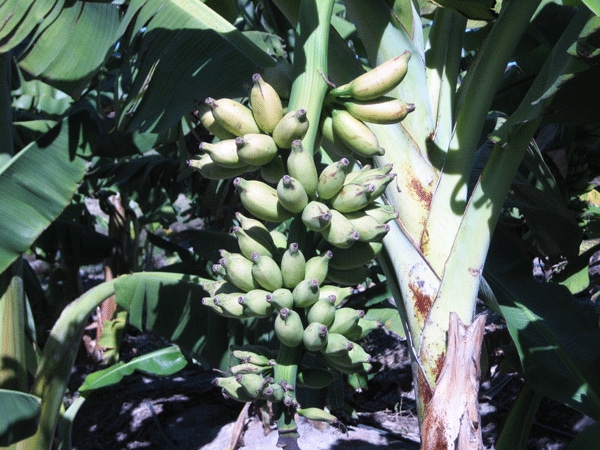
Florida researcher working to protect banana supply
Tropical race four of Panama disease, or TR4, wreaks havoc on banana plants by traveling up their trunk and killing their canopy.It appeared in the 1990s and destroyed banana plantations in Southeast Asia and Australia but has yet to arrive in the Western Hemisphere.There is no treatment for the disease.
March 16, 2011

The banana consumers know today could disappear from U.S. store shelves because of a tropical disease, just as its predecessor did more than 50 years ago, and a University of Florida researcher warns that awareness is needed to stop history from repeating itself.
Tropical race four of Panama disease, or TR4, wreaks havoc on banana plants by traveling up their trunk and killing their canopy. It appeared in the 1990s and destroyed banana plantations in Southeast Asia and Australia but has yet to arrive in the Western Hemisphere. There is no treatment for the disease.
In response to the TR4 threat, UF researcher Randy Ploetz has developed a six-part action plan he is sharing at international banana conferences. Ploetz, a plant pathologist with UF’s Institute of Food and Agricultural Sciences, was the first to identify TR4 in 1990. He is based at UF’s Tropical Research and Education Center in Homestead.
Ploetz’s plan recommends surveying quarantine measures in Western countries, increasing awareness of TR4, training diagnosticians, implementing an advanced method to accurately and rapidly identify TR4, mapping existing populations of the pathogen in the West and creating protocols for TR4 eradication.
“It’s kind of a wish list,” Ploetz said. “In an ideal world, if all six of these were addressed, I’d feel more confident that we had this thing well in hand.”
Bananas are the No. 1 fruit in the U.S., and the country imported more than 4 million tons of bananas from Latin America and the Caribbean in 2008 at a value of $1.3 billion, according to the U.S. Department of Agriculture.
Race 1 of Panama disease was originally recognized in Latin America in 1890 and moved through the region wiping out plantations of America’s first favorite banana, the Gros Michel, until the 1960s when banana exporting companies were forced to convert to a variety with resistance to race 1 — Cavendish.
Although Cavendish resists the still-prevalent race 1, it is susceptible to TR4. Today 99 percent of the bananas that are consumed in the U.S. are Cavendish. No comparable replacement exists for it at this time, Ploetz said.
Resistant varieties do exist
Banana varieties resistant to TR4, such as Goldfinger and Rose, do exist, but are not as hardy for shipping or as sweet as Cavendish. Goldfinger’s taste is often compared to that of an apple.
“Consumers are used to this Cavendish-type banana and in general won’t accept anything else,” Ploetz said.
Don Chafin, co-owner of Going Bananas nursery in Homestead, said his business offers more than 90 different types of bananas, including Goldfinger, and that it is unfortunate that more people are not familiar with them.
“Most people just know the variety they get at the grocery store, and we have so many more that are overwhelmingly delicious with interesting texture and aroma that the Cavendish, in my opinion, isn’t in the running,” Chafin said.
Chafin’s nursery is part of the approximately 500 acres of commercial bananas produced in Florida that have an annual value of about $2 million.
Ploetz said TR4 would not wipe out bananas overnight because it moves slowly through the soil. However, he said misdiagnoses can occur because symptoms caused by race 1 are the same as those caused by TR4.
“If TR4 arrived in the West and caused damage on varieties that are affected by race 1, it could become widespread before it was clear that a new problem was present in the hemisphere,” he said.
No one is sure when TR4 will arrive in the Western Hemisphere, Ploetz said.
“It could be tomorrow, it could be in 20 years. But history suggests it’s going to happen eventually. Somebody is going to bring it in their luggage, and once it establishes it will be nearly impossible to eradicate and difficult to manage.”
You May Also Like



